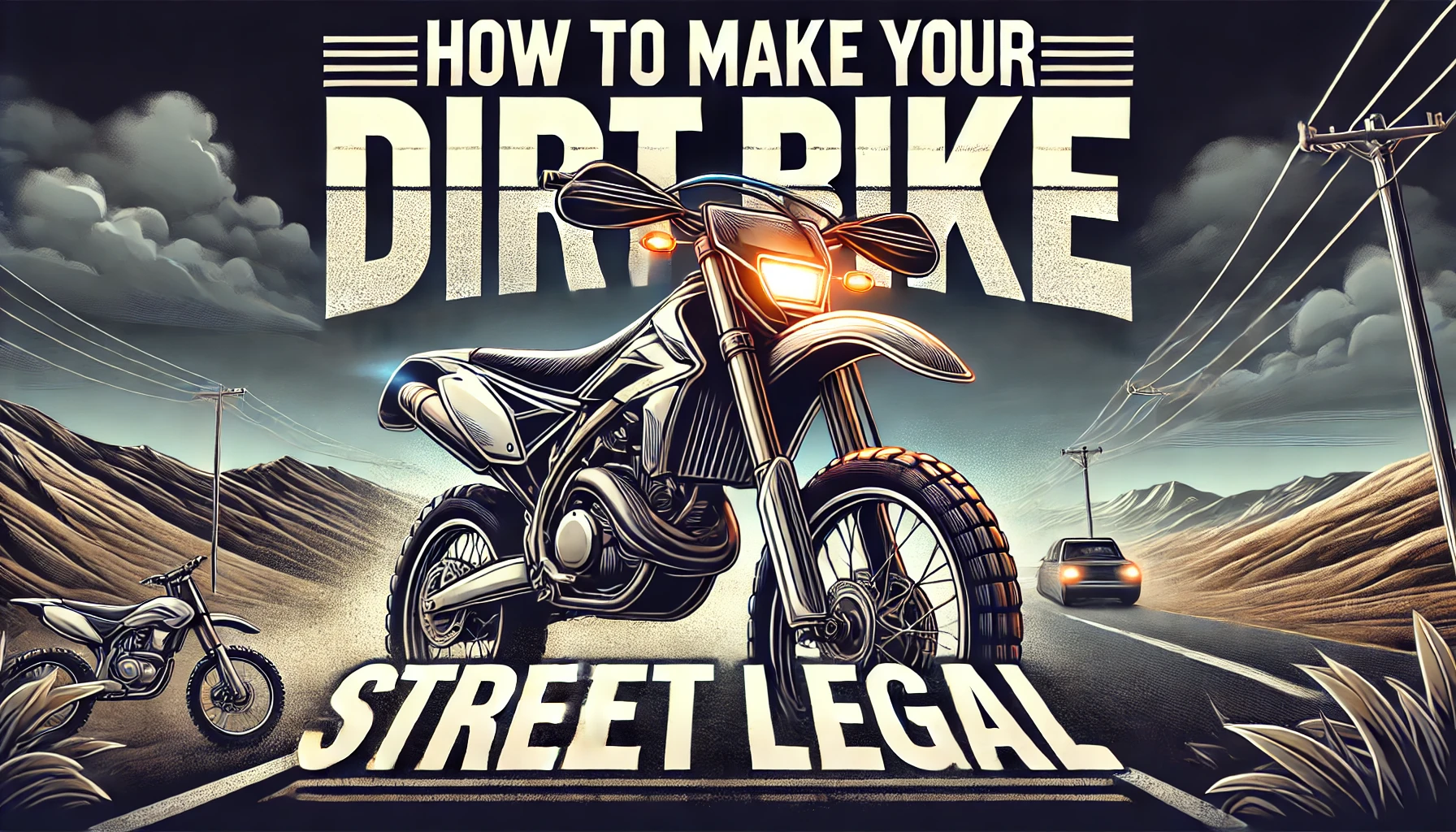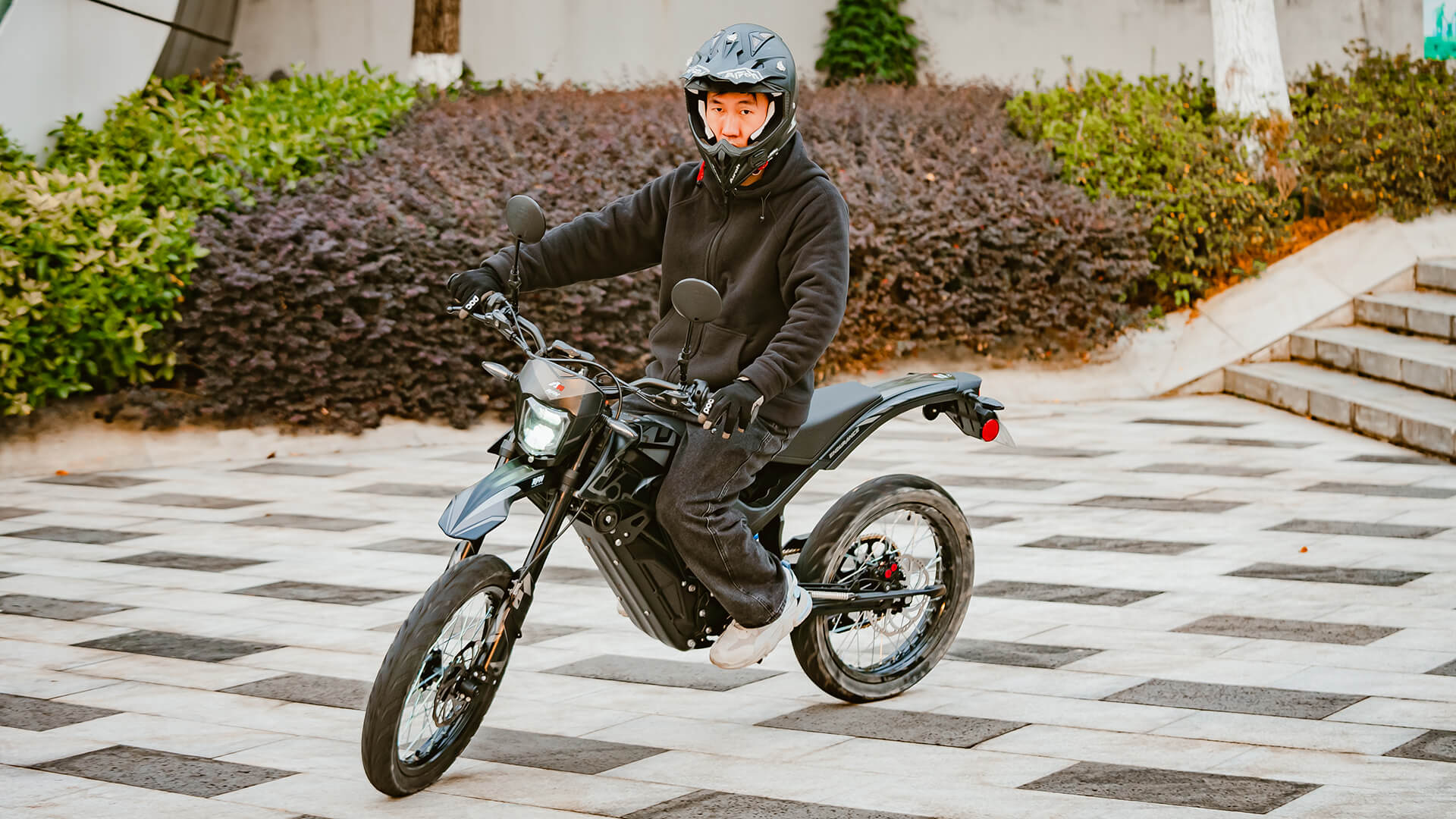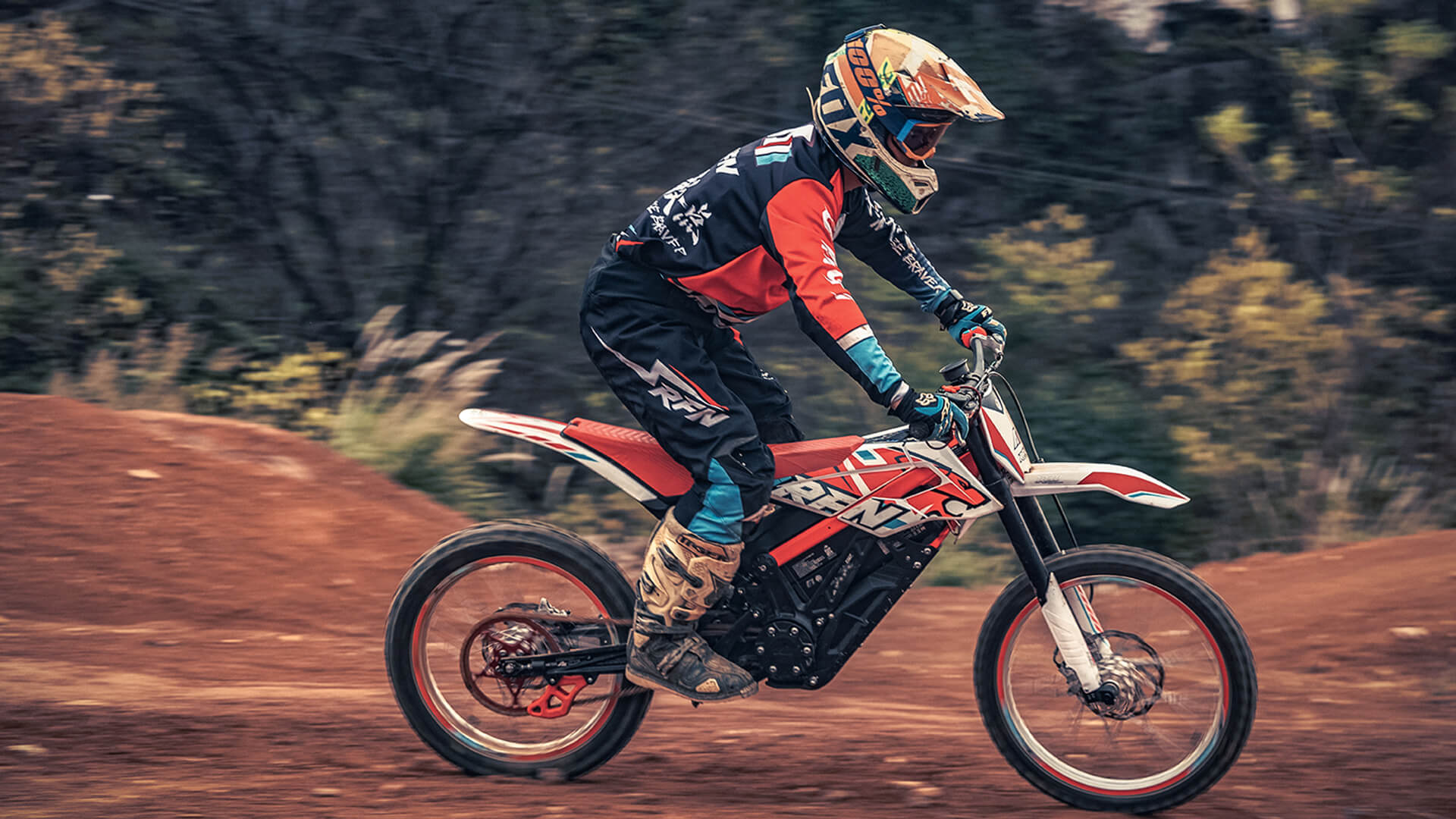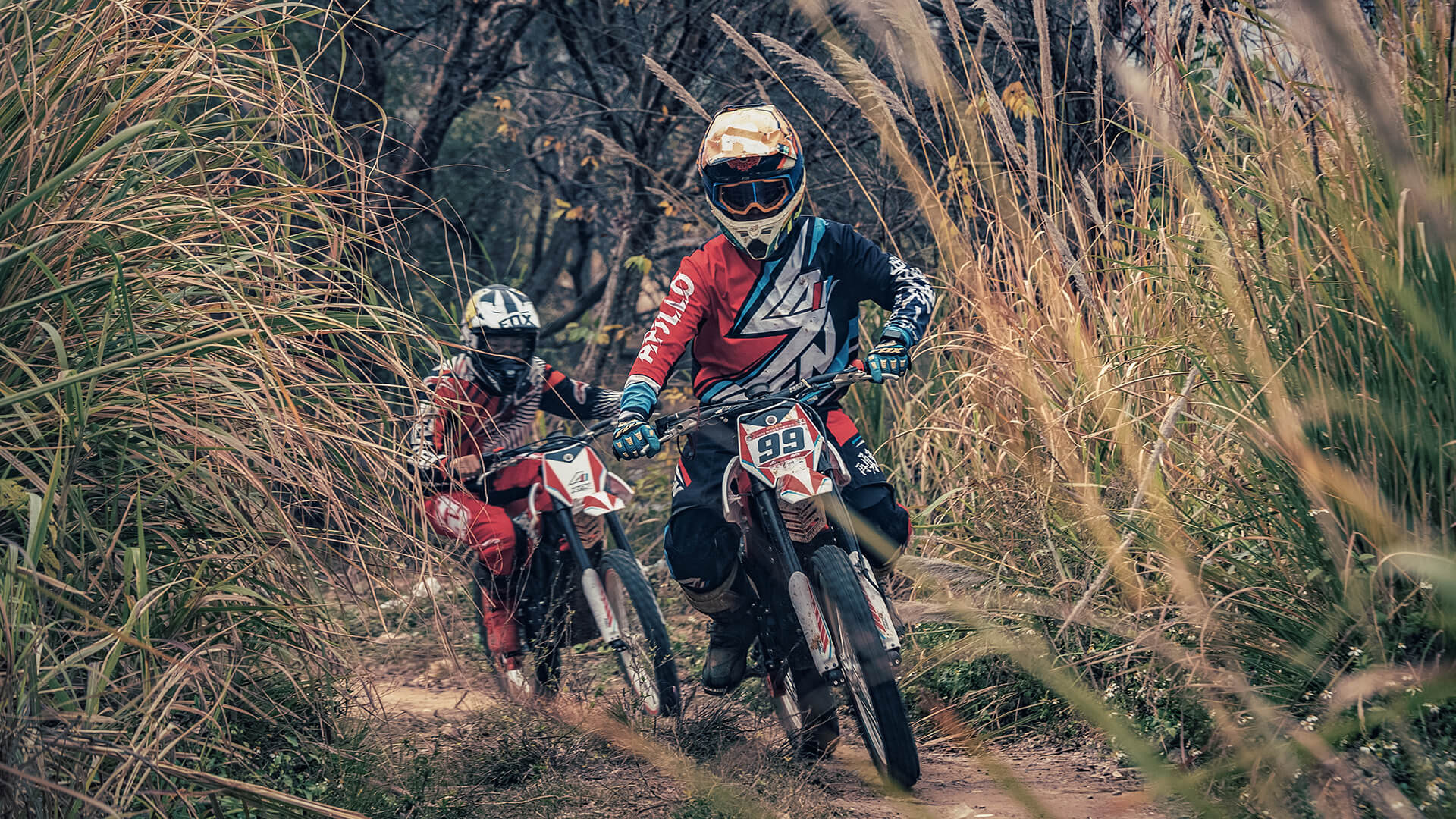
Turning your dirt bike into street-legal sounds exciting. But it is not as simple as it may sound. You’ll need more than a license plate. Making a dirt bike street legal takes patience, knowledge, and the right parts. You must meet legal requirements, deal with paperwork, and install essential upgrades. It’s not an overnight job, but it is possible with the proper guidance.
Whether you’re after a street-legal thrill ride or a fuel-efficient commuter, we’ll help you get there. This post will walk you through the process, making it simple and easy to understand. Let’s turn your off-road machine into a road-ready beast!
The rules for making a dirt bike street-legal vary by state. Some states, like Arizona, allow dirt bikes on roads with just a few modifications. Others, like California, have strict emissions laws, making it harder to register a dirt bike.
In Texas, you must add headlights, brake lights, mirrors, and a horn. Florida requires a title, registration, and insurance. In New York, most dirt bikes cannot be used on public roads at all.
To avoid fines, check your local DMV. Typical requirements include tires, turn signals, and a license plate. You may also need a street-legal conversion kit.
To make your dirt bike legal, you need a proper exhaust system. It must meet noise and emissions standards. A spark arrestor is often required, especially for riding in forests.
The State of California, has strict laws in place. You may need a catalytic converter to reduce pollution. This device helps turn harmful gases into cleaner emissions. Check your state’s rules to see if they are required.
Regularly inspect your exhaust for leaks or damage. A well-maintained system improves performance and fuel efficiency. If you need an upgrade, choose an EPA-approved exhaust that fits your bike. A legal exhaust keeps you safe from fines and protects the environment.

Verify that your bike has a valid title and registration before starting your ride. A motorcycle that lacks a valid title or registration will result in fines and potentially lead to impounding. A bike title functions as proof of ownership. Public road riding requires the registration document to be active. Compliance with both requirements at all times will prevent you from facing legal consequences.
Make copies of these documents. Store duplicate paperwork sets both at your residence and in your bicycle storage. The documents should always be handy, since this practice minimizes both time consumption and stress levels.
Check renewal dates regularly. The majority of states enable online registration renewals that provide fast and convenient service. You need to immediately change your address with authorities when it changes to receive important renewal notices. Maintaining proper organization will eliminate your concerns about everything.
A dirt bike requires insurance to become street-legal. The insurance policy ensures your protection against accidents, ft incidents, and damage to your vehicle. Request a policy that upholds state legislation from your provider. The insurance requirements differ between states because some jurisdictions mandate only liability coverage, while others need complete insurance with collision coverage.
Every street-legal bike in California needs to have liability insurance according to state law. Florida permits specific dirt bikes on public streets, yet it requires appropriate insurance coverage. All riders must verify the rules enforced by their state before hitting the road.
Update your policy if you modify your bike or change how you use it. A lapse in insurance can lead to fines or losing your registration. Some providers offer safety courses with discounts. Compare different policies to find the best deal.
The legal conversion of a dirt bike into street use demands the proper installation of a lighting system. Proper lighting reduces the risk of collisions.
A headlight is required by law. The system requires two lighting functions, high and low beams, to suit varying weather conditions. The regulations pertaining to lighting brightness and positioning of your vehicle can be found on your state website. Proper alignment of your lighting system will prevent visual obstruction from behind you.
Your tail and brake lights serve to indicate your driving maneuvers to following traffic. The best option for lighting consists of LED technology because these lights provide intense illumination at low power consumption rates while functioning at quick response times.
Check wiring and connections often. Faulty lights can cause accidents. Your safety depends on maintaining the perfect state of your equipment.
The majority of states do not mandate turn signals for dirt bikes. Instead, they allow hand signals. The use of turn signals reduces riding dangers for all participants.
With turn signals installed, you can maintain a full grip on the handlebars to enhance directional control. Yellow turn signals emit more noticeable light than hand signals when it is dark.
To ensure better safety, you should choose DOT-approved LED turn signals for installation. These signals have exceptional durability and provide vivid illumination alongside their capability to protect vehicle operators from road accidents.
Safety, together with legal compliance, requires rear-view mirrors to operate effectively. The mirrors allow you to view cars behind you, thus enabling safer lane changes and turning operations. When you are without proper side-view mirrors, your field of vision diminishes, resulting in more road accidents.
Two mirrors should be installed to give you a wide and unobstructed view from both sides. Use shatterproof mirrors made to withstand vibrations that will offer a longer product lifespan.
Every ride requires a mirror adjustment to achieve maximum visibility. Regular cleaning will produce clean reflections. Your field of vision remains clear during all weather conditions because well-kept mirrors help you observe your environment as traffic approaches.
A horn remains one of the essential safety tools and is required by law. Your horn operates as an alert system for both drivers and pedestrians, thus reducing possible accidents.
Pick a horn that produces sounds strong enough to fulfill your state’s defined decibel standards. Pressing the horn needs to be uncomplicated, and it should work without issue in all weather conditions.
Regular testing of the horn will help you verify its operational efficiency. The horn requires strong loudness for both traffic situations and emergency response purposes. A loud, clear horn is crucial in traffic and emergencies.

Your speed and distance tracking system consists of essential components that include both speedometer and odometer devices. Using these instruments enables you to control your speed effectively while maintaining a record of your bike’s distance traveled.
Digital speedometers function as an excellent selection for speed tracking. These performance gauges do not require any special effort to understand and commonly offer additional information about trip distances and fuel levels. Select a speedometer and odometer unit that matches your bike’s specific model and possesses easy installation requirements.
Make frequent inspections and calibration tests to verify your speedometer’s accuracy level. An inaccurate speed reading from your instruments might trigger both speeding fines and improper mileage records. The maintenance and law compliance of bikes, together with safety in riding, depends on properly maintained instruments.
High-quality dirt bike tires are essential to perform effectively on the streets. Off-road tires experience rapid deterioration while driving on pavement since they perform less effectively. To achieve better traction stability and safety, DOT-approved street tires must meet the approval requirements of the Department of Transportation.
Draft your selection from a range of tires that are designed according to your bike dimensions as well as your intended road conditions. Check tire pressure and tread depth often. Worn-out tires increase accident risk.
Wheel alignment stands as important as other maintenance procedures. When wheels are not properly aligned, they create reduced tire durability and handling control problems. Your bike requires alignment service according to maker specifications. Frequent checks lead to increased performance, lower repair expenses, and higher system stability. Combining safe tires with proper alignment leads to a smooth and legal-legal ride.
The law requires your dirt bike to have an exhaust system that is both emission-compliant and noise-compliant. A compatible aftermarket exhaust system with a spark arrestor should be installed according to EPA noise and emissions parameters.
Regular inspections should be conducted to look for exhaust system leaks and damage. Installing a proper exhaust system will minimize dangerous emissions and noise and maintain road legality.
Look for an exhaust system option that enhances both speed capabilities and fuel performance. The bike’s functionality depends on proper maintenance because it keeps the vehicle running smoothly while maintaining legal status and lowering environmental impact.
Every street-legal dirt bike requires a license plate according to legal requirements. The license plate needs to be plainly visible while also being firmly mounted and readable by anyone. All states enforce the requirement to display the license plate on the back of the bike. The safety requirements for dirt bikes include a reliable bracket that keeps the license plate firmly mounted. The majority of bikes already contain this feature, while those that do not have the option to purchase aftermarket kits specifically designed for this purpose. The mounting system must follow local regulations that determine plate dimensions together with their designated positions.
The chain guard functions as an important safety system to stop riders from getting anything stuck in the moving chain. The law requires dirt bikes to have guard installations to achieve safety compliance. A guard installed on a bike protects riders and others from accidents by minimizing potential risks. An effectively installed chain guard must secure the entire chain area because loose or absent guards present safety risks and financial penalties.
The law considers reflectors essential to establish the street legality of vehicles. The installation of reflectors improves your bike’s visibility during nighttime driving and reduces visibility periods. A legal dirt bike will include three reflectors, which should be located at the front, rear, and sides of the bike. These reflectors are mandatory for legal compliance in various regions across the country. The use of high-quality reflectors that fulfill safety standards enables you to avoid receiving fines. The reflectors must stay effective by remaining visible and free from mud or dirt buildup.
The street requires dirt bikes to be parked safely using a kickstand. The kickstand maintains your bike’s position upright during rest time to stop it from collapsing. Kickstands must be both strong and dependable in their operation. A properly functioning kickstand that maintains high standards of maintenance is mandatory for street legal use. A kickstand is necessary for bike parking because, without one, you will face difficulties that might lead to penalties and safety hazards.

Dirt bike laws vary based on type, location, and intended use. Understanding these regulations prevents fines and legal issues.
Most off-road dirt bikes come without the necessary equipment needed for street use such as headlights and mirrors and turn signals. These bikes can operate exclusively within three locations: private land, designated trails and authorized motocross racetracks. Registration requirements for off-road vehicles exist as mandatory in certain states. Some states only demand an off-road permit for these vehicles.
Off-road dirt bikers in California need to obtain either a Red or Green Sticker which the DMV issues. Motorcyclists who obtain Green Stickers can ride continuously throughout the year. Red Sticker holders have riding restrictions based on emissions control regulations.
Dual-sport bikes have safety features that fulfill all street driving regulations. For legal operation of dual-sport bikes you must obtain documentation including title plus DMV registration with license plate and insurance coverage. Additionally riders need to obtain a motorcycle license for operation.
Texas law requires dual-sport bikes to obtain registration after passing a safety check and by using DOT-approved tires and illumination systems and mirrors.
Electric dirt bike laws vary. These vehicles may be categorized either as bicycles or as motorcyclines according to specific legal definitions. The requirements for wearing helmets together with specific age requirements exist across numerous locations. The New York City government allows e-dirt bikes to go a 30MPH or less yet enforcement requires permission from the authorities for more powerful models and operating licenses.
Each state has implemented age-based regulations for bike operation by young people. The requirements for operating these vehicles include both parental supervision together with rider safety courses and protective gear.
Riding a dirt bike that’s too big or too small can be dangerous. Matching the bike to the rider’s age ensures they can reach the ground and control the bike properly.
Each state has its own set of regulations for dirt bike operation. The majority of U.S. states need dirt bike riders to reach a minimum age of 6 before riding their bikes on private land. The mandatory age requirements to use public trails fall between 10 years old and 16 years old under supervision. The laws in Texas and California demand young riders to take certified off-highway vehicle safety instruction. Parents must verify local regulations before acquiring a dirt bike to give to their children.
The engine size should match the rider’s skill and strength. Children between 6 and 8 years old should ride 50cc dirt bikes since their size matches their skill level. The most suitable engine size range for children between 9 and 12 goes from 110cc to 125cc. Students aged 13 and above should ride bikes ranging from 125cc to 250cc. Several states establish official laws which determine what engine size youth can ride outside their homes. The state of New York has established a restriction that stops riders younger than 16 from operating bikes that exceed 125cc engine size.
All street bikes need to complete a vehicle inspection before they can receive registration. The inspection guarantees your bike meets safety requirements for public road usage. The inspector conducts inspections of your bike’s lights and brakes as well as its tires, suspension, and exhaust system. The inspector will verify that the recorded VIN matches the official documentation. Get your bike inspected only when it is clean and its condition is good. You will need to fix all dirt bike equipments, including dim lights or worn tires, before the inspection test.
The compliance check verifies your bicycle meets all necessary local requirements. The safety inspection requires all mandatory safety devices to be present, including mirrors, turn signals, and reflective plates. To pass the inspection, you must verify that the exhaust system meets both noise level restrictions and emission requirements. Aftermarket parts on your bike need to fulfill all requirements specified by your local area regulations. Review all rules before you modify your bike to prevent potential problems.
The bike inspection process concludes when your vehicle passes all tests and meets the requirements of local registration rules. Your registration completion requires an inspection report together with proof of insurance and valid identification. Complete payment of registration fees leads to the receipt of official documents and license plates. Then, you have a dirt bike license to ride your street bike following this point. Keep your registration documents with you, as you may need them during traffic stops.
A street-legal dirt bike combines off-road thrill with on-road convenience. With the right mods and legal paperwork, you’re ready to ride everywhere. Keep safety in mind and follow the necessary steps. The dirt road now leads to the street, giving you the best of both worlds. Get your bike ready, and enjoy the ride—whether it’s the trails or the town!
APOLLINO stands at the forefront as a top-tier manufacturer specializing off-road motorcycles, with the aim to spread its network worldwide. Join hands with our fantastic team. You can get instant quotes and order deliveries with the best quality products.
Connect with us today to join the ride towards innovation and explore the thrilling world of off-road adventures!
This website utilizes technologies such as cookies to enable essential site functionality, as well as for analytics, personalization, and targeted advertising purposes.